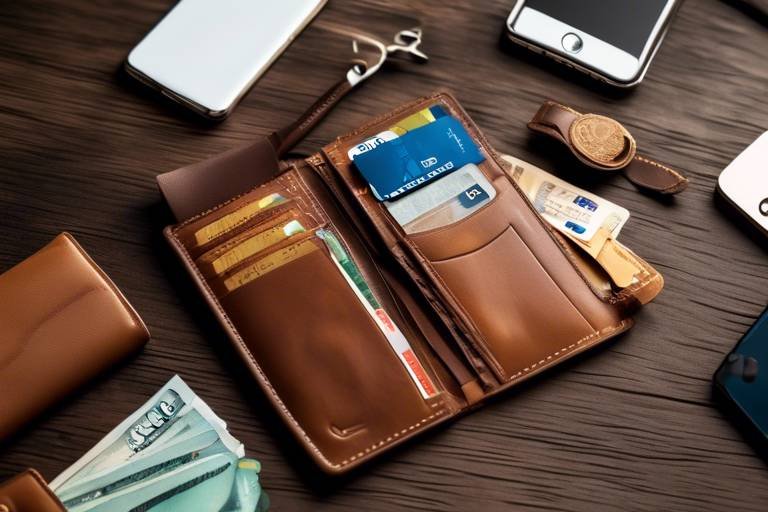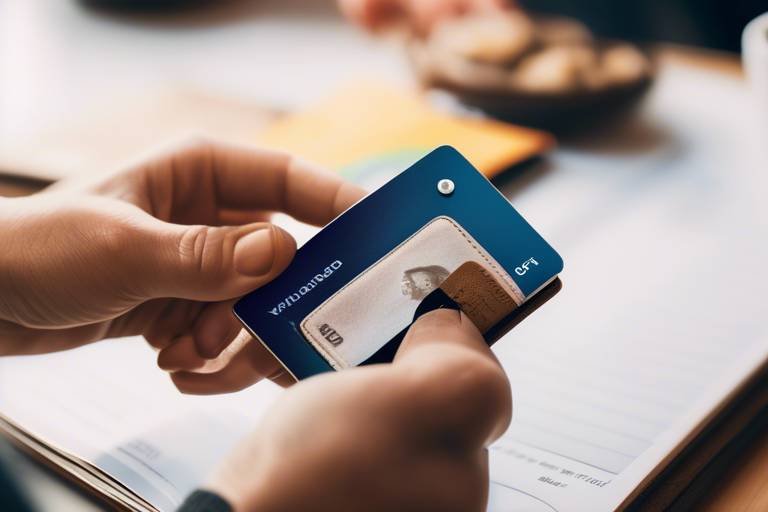Understanding Wallet Functionality in Different Markets
In today's digital age, the concept of a wallet has evolved far beyond its traditional leather counterpart. With the rise of cryptocurrencies and digital assets, wallets now serve as vital tools for managing not only money but also a plethora of unique digital items. This article delves into the fascinating world of wallet functionalities across various markets, exploring their unique features, security measures, and the profound impact they have on user experience and transactions.
When it comes to wallets, one size certainly does not fit all. There are several types of wallets available, each designed with specific functionalities and ideal use cases in mind. Let's break them down:
- Digital Wallets: These are applications or software that allow users to store and manage their digital assets, such as cryptocurrencies. They are accessible on smartphones or computers, making transactions quick and convenient.
- Hardware Wallets: For those who prioritize security, hardware wallets are physical devices that store your assets offline. They are often considered the safest option because they are less vulnerable to hacking.
- Paper Wallets: This is the most basic form of a wallet, where your private keys and public addresses are printed on paper. While they are immune to online attacks, they can be easily lost or damaged.
Each wallet type offers unique functionalities that cater to different user needs, whether for daily transactions, long-term storage, or enhanced security.
Security is paramount when it comes to managing digital assets. Various wallets come equipped with essential security features designed to protect user assets in diverse markets. These features include:
- Encryption: This is a vital component that ensures your sensitive data is safeguarded from unauthorized access.
- Two-Factor Authentication (2FA): Adding an extra layer of security, 2FA requires users to verify their identity through a second method, such as a text message or authentication app.
- Cold Storage: This refers to keeping assets offline, significantly reducing the risk of online theft.
By implementing these security measures, wallet providers can help users feel more secure about their transactions and asset management.
One of the most critical aspects of wallet security is encryption. It acts as a digital lock, ensuring that only authorized users can access their assets. Encryption methods vary, but they all aim to protect sensitive information. Understanding how encryption works can empower users to choose the right wallet based on their security needs.
In the world of encryption, two primary methods stand out: symmetric and asymmetric encryption. Symmetric encryption uses a single key for both encryption and decryption, making it fast but potentially risky if that key is compromised. On the other hand, asymmetric encryption utilizes a pair of keys—public and private—offering enhanced security. This knowledge can guide users in selecting wallets that align with their security preferences.
For those operating in collaborative environments, multi-signature wallets provide an added layer of security. These wallets require multiple private keys to authorize a transaction, making unauthorized access exceedingly difficult. They are particularly useful for businesses or groups where several individuals need to approve transactions, ensuring that everyone is on the same page.
Two-factor authentication (2FA) has become a cornerstone of digital security. By requiring users to verify their identity through a second method, 2FA significantly reduces the risk of unauthorized access. Imagine your wallet as a treasure chest; while a key is essential, having a second lock makes it even harder for intruders to break in. This simple yet effective measure enhances the security of wallets across various markets.
User experience plays a crucial role in wallet adoption. A well-designed wallet can make all the difference between a user feeling frustrated or delighted. Factors such as interface design, ease of use, and customer support can significantly affect user satisfaction. After all, if your wallet feels like a maze, you might just give up on it altogether!
A wallet's interface is its first impression. A clean, intuitive design can transform wallet usage from a chore into an enjoyable experience. Just like a well-organized kitchen makes cooking easier, a well-designed wallet encourages users to engage more with their digital assets. Features like easy navigation, clear transaction histories, and visually appealing layouts can enhance user engagement and promote broader adoption.
Reliable customer support is the safety net that users rely on when issues arise. Wallet providers that offer various support options—such as live chat, email, and comprehensive FAQs—can significantly boost user trust. When users know they have help at their fingertips, they are more likely to feel secure in their transactions and overall experience.
The landscape of digital wallets is ever-evolving, with trends continuously shaping their functionalities. One of the most significant trends is the rise of decentralized finance (DeFi). DeFi is revolutionizing how wallets function, enabling users to lend, borrow, and trade directly from their wallets, thus reshaping traditional financial interactions. It's like having a mini bank right in your pocket!
As DeFi continues to grow, wallets are adapting by incorporating features that allow seamless interaction with decentralized applications. This integration is empowering users to take control of their finances like never before, opening up a world of possibilities for managing assets.
The meteoric rise of NFTs has also prompted wallets to evolve. As users seek to manage and trade unique digital assets, wallets are adapting to support these collectibles. This shift not only enhances user experience but also broadens the scope of what wallets can do, making them more versatile and appealing.
Looking ahead, the future of wallet functionalities seems bright and full of potential. With technological advancements and evolving user needs, we can expect to see wallets that are not only more secure but also more user-friendly. As we embrace the digital age, wallets will continue to adapt, ensuring that managing assets remains as seamless and enjoyable as possible.
Q: What is the safest type of wallet for storing cryptocurrencies?
A: Hardware wallets are generally considered the safest option for storing cryptocurrencies due to their offline nature.
Q: How does two-factor authentication enhance wallet security?
A: Two-factor authentication adds an extra layer of security by requiring a second form of identification, making unauthorized access much more difficult.
Q: Can I use multiple types of wallets simultaneously?
A: Yes, many users opt to use a combination of wallet types for different purposes, such as a hardware wallet for long-term storage and a digital wallet for daily transactions.

Types of Wallets
When it comes to managing digital assets, understanding the different types of wallets is crucial. Just like you wouldn’t use a backpack to carry a delicate piece of jewelry, the right wallet can make all the difference in how you store and manage your cryptocurrencies or digital assets. There are several types of wallets available, each with unique functionalities tailored to meet the needs of various users.
First up, we have digital wallets. These are perhaps the most popular and widely used types, especially among everyday users. Digital wallets can be accessed via smartphones or computers, making transactions incredibly convenient. They allow users to send, receive, and store cryptocurrencies with just a few taps or clicks. However, they also come with their own set of risks, particularly related to online security. It's like having your wallet in your pocket—easy access but also vulnerable to pickpockets!
Next, let’s talk about hardware wallets. If digital wallets are like carrying cash in your pocket, then hardware wallets are akin to a safe in your home. These physical devices store your cryptocurrencies offline, making them far less susceptible to hacking. Hardware wallets are ideal for individuals who hold a significant amount of digital assets and prioritize security over convenience. They can be a bit more complex to set up and use, but the peace of mind they provide is often worth the extra effort.
Then, we have paper wallets. Imagine writing down your passwords on a piece of paper and tucking it away in a drawer. That’s essentially what a paper wallet is. It involves printing out your public and private keys on paper, allowing you to store your assets offline. While this method is incredibly secure from online threats, it does come with its own risks. If you lose that piece of paper or if it gets damaged, your assets could be permanently lost. It’s a high-stakes game for those who dare to play!
To further clarify the differences, let’s take a look at the table below:
| Type of Wallet | Accessibility | Security Level | Best For |
|---|---|---|---|
| Digital Wallet | High (accessible via devices) | Medium (vulnerable to hacking) | Everyday transactions |
| Hardware Wallet | Low (requires physical device) | High (offline storage) | Long-term storage |
| Paper Wallet | Very Low (physical form) | Very High (offline, no digital exposure) | Advanced users |
In conclusion, the type of wallet you choose largely depends on your individual needs and how you plan to use your digital assets. Whether you’re looking for convenience, security, or a combination of both, understanding these wallet types will empower you to make informed decisions as you navigate the digital asset landscape.

Security Features
In the digital age, where cyber threats loom larger than ever, the of wallets have become paramount. Whether you’re dealing with cryptocurrencies or sensitive personal information, the need for robust security cannot be overstated. Wallets serve as digital vaults, and just like a bank, they must be fortified against intruders. But what exactly makes a wallet secure? Let's dive into some of the essential security features that keep your assets safe.
One of the cornerstones of wallet security is encryption. This process transforms your data into a coded format that can only be read by someone with the correct decryption key. Imagine sending a secret message to a friend; unless they have the key, they won’t be able to understand it. In wallets, encryption protects sensitive data from unauthorized access, ensuring that even if a hacker intercepts the information, it remains unreadable. Wallets typically employ various encryption methods, which we will explore in more detail below.
When it comes to encryption, there are two primary types: symmetric and asymmetric. Symmetric encryption uses the same key for both encryption and decryption, making it faster but potentially less secure if the key is compromised. On the other hand, asymmetric encryption uses a pair of keys – a public key for encryption and a private key for decryption. This dual-key approach enhances security, as the private key never needs to be shared. Understanding these methods can help users choose the right wallet based on their security needs and preferences.
To put it simply, think of symmetric encryption like a single key that opens a lock. If someone gets that key, they can access everything inside. Conversely, asymmetric encryption is like having two keys: one for locking the door (the public key) and one for unlocking it (the private key). This distinction is crucial for users who prioritize security, especially in environments where sensitive transactions occur.
Another innovative security feature is the multi-signature wallet. These wallets require multiple private keys to authorize a transaction, adding an extra layer of security. Imagine needing several friends to agree before you can open a treasure chest; this is how multi-signature wallets function. They are particularly useful for businesses or collaborative projects, where shared control over funds is necessary. This feature not only enhances security but also fosters trust among users who share access to the wallet.
In addition to encryption, two-factor authentication (2FA) plays a critical role in enhancing wallet security. This method requires users to provide two forms of identification before accessing their wallets. Typically, this involves something you know (like a password) and something you have (like a mobile device). Think of it as having a double lock on your front door; even if someone has your key, they still can’t get in without the second form of identification. 2FA significantly reduces the risk of unauthorized access, making it a must-have feature for any secure wallet.
In summary, the security features of wallets are not just technical jargon; they are essential safeguards designed to protect your assets in an increasingly digital world. From encryption methods to multi-signature wallets and two-factor authentication, each feature plays a vital role in ensuring your peace of mind. As you consider which wallet to use, take the time to evaluate these security measures and choose one that aligns with your needs.
What is the most secure type of wallet?
While hardware wallets are generally considered the most secure due to their offline storage, the best wallet for you depends on your specific needs and usage patterns.
How does two-factor authentication work?
Two-factor authentication requires you to provide two forms of identification, such as a password and a code sent to your mobile device, to access your wallet.
Can I recover my wallet if I lose access?
Most wallets provide recovery options, like seed phrases, which allow you to regain access. Always keep these recovery details secure.
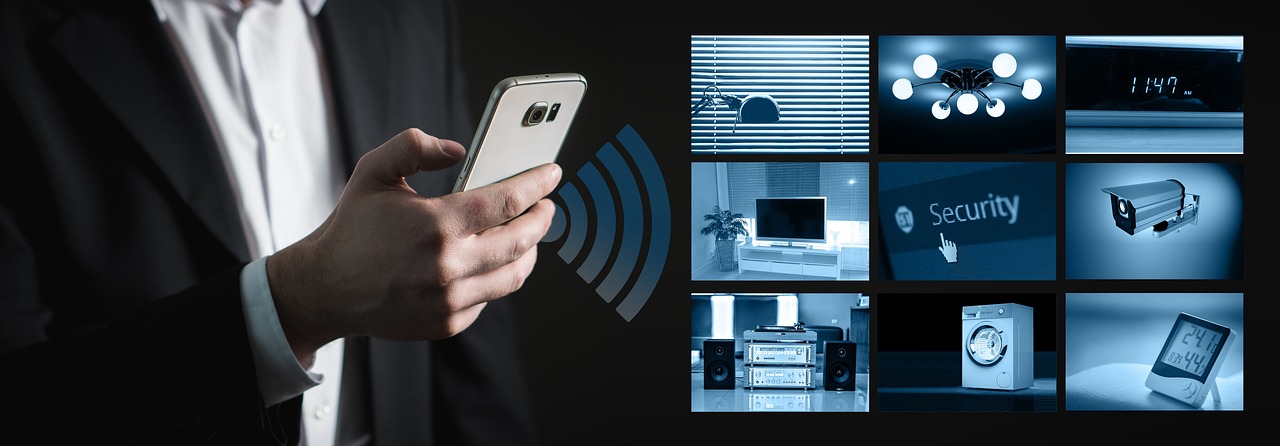
Encryption Methods
When it comes to securing your digital assets, play a pivotal role. Essentially, encryption transforms your sensitive information into a format that is unreadable to anyone who doesn’t possess the correct key to decipher it. Think of it like a secret code that only you and your trusted contacts can understand. This process is crucial for protecting your wallet data, whether you're dealing with cryptocurrencies or personal information.
There are several encryption methods employed by wallets today, each with its own strengths and weaknesses. The two most common types are symmetric and asymmetric encryption. In symmetric encryption, the same key is used for both encryption and decryption. It’s fast and efficient, but the challenge lies in keeping that key secure. On the other hand, asymmetric encryption uses a pair of keys: a public key for encryption and a private key for decryption. This method is generally considered more secure since the private key never has to be shared.
To give you a clearer picture, here’s a simple comparison:
| Feature | Symmetric Encryption | Asymmetric Encryption |
|---|---|---|
| Key Usage | Single key for both encryption and decryption | Two keys: public and private |
| Speed | Faster | Slower |
| Security | Vulnerable if the key is compromised | More secure; private key remains confidential |
Another noteworthy method is multi-signature encryption. This technique requires multiple private keys to authorize a transaction, adding an extra layer of security. Imagine needing several signatures on a document before it can be officially recognized; this is how multi-signature wallets operate. They are especially beneficial in collaborative environments, such as businesses, where multiple stakeholders need to agree before any funds are moved.
In summary, understanding these encryption methods is crucial for anyone looking to safeguard their digital assets effectively. The right choice depends on individual needs and the level of security required. Whether you opt for symmetric encryption for its speed or asymmetric encryption for its enhanced security, what matters most is that you are taking steps to protect your valuable information in an increasingly digital world.
- What is the most secure encryption method for wallets? Asymmetric encryption is generally considered more secure due to its use of a private key that never needs to be shared.
- How does multi-signature encryption work? Multi-signature wallets require multiple private keys to authorize transactions, making them ideal for collaborative scenarios.
- Can I change my encryption method? Yes, many wallets allow users to change their encryption settings, but it’s essential to understand the implications of such changes.

Symmetric vs. Asymmetric Encryption
When it comes to securing your digital assets, understanding the difference between symmetric and asymmetric encryption is crucial. Think of symmetric encryption as a locked box that requires a single key to both lock and unlock it. This means that both the sender and receiver must have access to the same key, which can be a double-edged sword. If that key falls into the wrong hands, your precious information is at risk. On the other hand, asymmetric encryption uses a pair of keys: a public key that anyone can use to encrypt messages, and a private key that only the recipient possesses to decrypt them. This method adds a layer of security by ensuring that even if the public key is exposed, the private key remains confidential.
Both types of encryption have their strengths and weaknesses, making them suitable for different scenarios. For instance, symmetric encryption is typically faster and more efficient for encrypting large amounts of data, making it ideal for situations where speed is essential, such as in real-time communications. However, its reliance on a single key can be a vulnerability if not managed properly.
In contrast, asymmetric encryption, while slower due to its complex mathematical algorithms, provides a more secure solution for transmitting sensitive information over the internet, such as in financial transactions or when accessing secure servers. The use of two keys significantly reduces the risk of unauthorized access, which is why it's often favored in digital wallets and other secure applications.
| Feature | Symmetric Encryption | Asymmetric Encryption |
|---|---|---|
| Key Usage | Single key for both encryption and decryption | Pair of keys: public and private |
| Speed | Faster, suitable for large data | Slower, suitable for secure communications |
| Security | Vulnerable if the key is compromised | More secure, as the private key remains confidential |
| Use Cases | Real-time communications, bulk data encryption | Secure transactions, digital signatures |
Ultimately, the choice between symmetric and asymmetric encryption often depends on the specific needs of the user and the context in which the wallet is being used. By understanding these differences, users can make informed decisions about which type of encryption best suits their security requirements.
- What is encryption? Encryption is the process of converting information into a code to prevent unauthorized access.
- Why is encryption important for wallets? It protects sensitive information such as private keys and transaction details from being accessed by unauthorized parties.
- Can I use both symmetric and asymmetric encryption? Yes, many systems utilize both types of encryption to leverage their respective strengths.

Multi-Signature Wallets
When it comes to securing your digital assets, stand out as a robust solution that adds an extra layer of security. Imagine having a safe that requires not just one key, but several to unlock it. This is precisely what multi-signature wallets do—they require multiple private keys for transactions, making unauthorized access significantly more challenging. This feature is particularly beneficial for businesses or collaborative environments where multiple stakeholders need to approve a transaction before it can be executed.
In a typical multi-signature setup, a wallet can be configured to require a certain number of signatures (or keys) to authorize a transaction. For example, a 2-of-3 multi-signature wallet means that out of three keys, at least two must be used to complete a transaction. This not only enhances security but also fosters accountability among participants. If one key is compromised, the funds remain safe as long as the other keys are secure. This system can be likened to a group of friends who decide to keep a treasure chest locked, requiring at least two of them to be present to open it. The treasure remains safe from any one individual acting alone.
Multi-signature wallets are particularly advantageous for businesses managing substantial funds or for families wanting to secure their collective assets. They can also be used to set up trust funds or inheritance plans, where certain conditions must be met before assets can be accessed. The flexibility of these wallets allows users to customize the number of required signatures based on their specific needs and the level of security desired.
However, it’s essential to note that while multi-signature wallets enhance security, they also introduce complexity. Users must ensure that all parties involved understand the process and have access to their respective keys. Additionally, if a key is lost and the required number of signatures cannot be met, accessing the funds can become impossible. Therefore, proper management and backup of keys are crucial.
In summary, multi-signature wallets represent a significant evolution in the way we think about securing digital assets. They provide a compelling solution for those who prioritize security and collaboration, ensuring that funds are safeguarded against unauthorized access while still allowing for cooperative management. As the digital landscape continues to evolve, these wallets will likely become a standard feature for users looking to enhance their asset protection strategies.
- What is a multi-signature wallet?
A multi-signature wallet is a type of cryptocurrency wallet that requires multiple keys to authorize a transaction, enhancing security. - How does a multi-signature wallet work?
It works by requiring a specified number of signatures from different private keys to execute a transaction. - Who should use a multi-signature wallet?
They are ideal for businesses, groups managing shared funds, or individuals wanting extra security for their assets. - What happens if I lose my key?
If you lose a key, it can prevent access to your funds if the required number of signatures cannot be met.

Two-Factor Authentication
When it comes to securing your digital wallet, Two-Factor Authentication (2FA) is like having a sturdy lock on your front door, combined with a security guard standing watch. It adds an extra layer of protection that makes it significantly harder for unauthorized users to gain access to your sensitive information. But how does it work? Essentially, 2FA requires not just a password but also a second piece of evidence that proves your identity. This could be a text message with a verification code, an email, or even a biometric scan like a fingerprint.
Imagine you're trying to access your bank account online. You enter your username and password, and just when you think you're in, a prompt appears asking for a code sent to your mobile device. This is where the magic of 2FA comes into play. Even if someone has stolen your password, they still can't access your account without that second piece of information. This dual-layer approach significantly reduces the risk of unauthorized access, making it a crucial feature for any wallet.
Furthermore, the implementation of 2FA varies across different wallet providers. Some wallets offer app-based authentication, where you use a dedicated app like Google Authenticator or Authy to generate time-sensitive codes. Others might send codes via SMS or email. While SMS is convenient, it’s worth noting that it’s not the most secure method, as it can be susceptible to interception. On the other hand, app-based authentication is generally considered more secure due to its offline nature.
Here’s a quick comparison of the different 2FA methods:
| Method | Security Level | Convenience |
|---|---|---|
| SMS Codes | Medium | High |
| Email Codes | Medium | High |
| App-Based Codes | High | Medium |
| Biometric Authentication | Very High | Medium |
In summary, is an essential feature that enhances wallet security, providing peace of mind for users. By requiring a second form of verification, it makes unauthorized access significantly more difficult. As you explore different wallets, always check if they offer 2FA and what methods they use. Remember, in the world of digital assets, a little extra security can go a long way!
- What is Two-Factor Authentication? - It's a security process that requires two different forms of identification to access an account.
- Why is 2FA important for wallets? - It adds an extra layer of security, making it much harder for unauthorized users to access your funds.
- What methods can be used for 2FA? - Common methods include SMS codes, email codes, app-based codes, and biometric authentication.
- Is SMS 2FA secure? - While convenient, SMS 2FA is less secure than app-based methods due to potential interception.

User Experience
User experience (UX) is a critical aspect of wallet functionality that can make or break a user's interaction with digital assets. Imagine walking into a store where everything is chaotic and disorganized; you’d likely leave without making a purchase. Similarly, if a wallet is difficult to navigate or understand, users may abandon it in favor of more intuitive options. The design of a wallet should not only be aesthetically pleasing but also functional and user-friendly. A seamless user experience can significantly enhance user satisfaction, leading to higher adoption rates across different markets.
One of the key components of user experience is interface design. A well-designed interface can make wallet usage intuitive and enjoyable, enhancing user engagement. For instance, wallets that utilize a clean layout, clear icons, and straightforward navigation allow users to quickly find what they need, whether it's checking their balance, making transactions, or accessing customer support. Wallets that prioritize UX often incorporate features like customizable dashboards, which allow users to display the information most relevant to them, thus creating a personalized experience.
Moreover, the importance of customer support cannot be overstated. When users encounter issues, having reliable customer support options can be the difference between retaining a user or losing them to competitors. Wallet providers that offer multiple support channels—such as live chat, email, and comprehensive FAQs—tend to build trust and loyalty among their user base. For example, a wallet that provides 24/7 support can reassure users that help is always available, which is especially important in the fast-paced world of digital finance.
When evaluating user experience, it's also essential to consider the feedback loop. Many successful wallet providers actively seek user feedback to continually improve their services. This can include surveys, user testing, and community forums where users can share their experiences and suggest improvements. By creating a dialogue with users, wallet developers can make informed decisions about new features or changes that enhance usability.
In conclusion, the user experience of a wallet is not just about how it looks; it encompasses how it functions and how users feel while using it. From intuitive interface design to reliable customer support and active engagement with user feedback, every element plays a vital role in shaping the overall experience. As the digital landscape evolves, wallet providers must remain vigilant and adaptable to meet the ever-changing needs of their users.
- What makes a wallet user-friendly? A user-friendly wallet typically features an intuitive interface, straightforward navigation, and easy access to customer support.
- Why is customer support important for wallets? Reliable customer support helps resolve issues quickly, fostering trust and loyalty among users.
- How can user feedback improve wallet functionality? User feedback provides valuable insights that can guide developers in making enhancements and adding features that meet user needs.
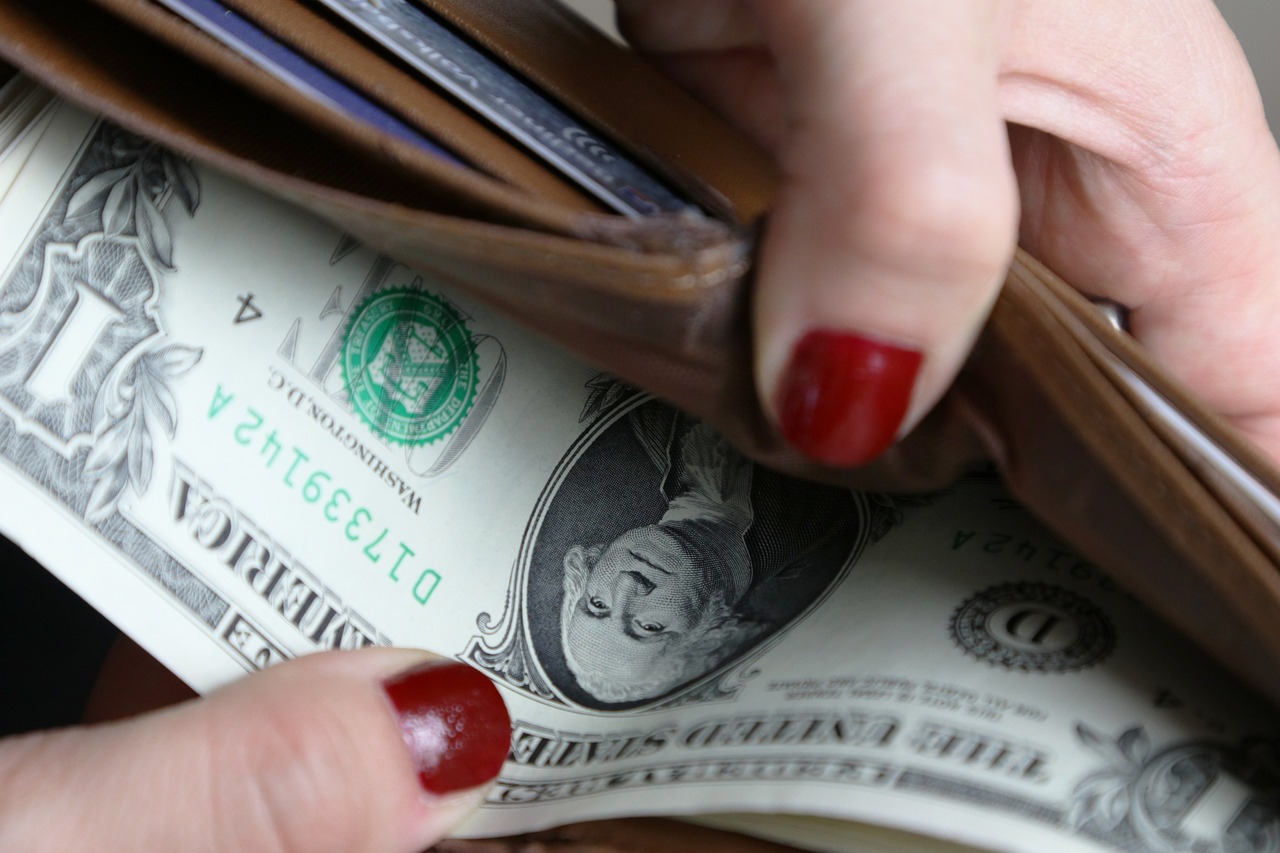
Interface Design
When it comes to wallet functionality, the plays a pivotal role in enhancing user experience. Imagine walking into a store where everything is disorganized; you’d likely leave in frustration, right? The same concept applies to digital wallets. A well-designed interface is like a well-organized store that guides you effortlessly through your transactions. Users need to navigate their wallets with ease, and a clutter-free, intuitive design is essential for this.
Many wallet providers understand that a visually appealing and user-friendly interface can make all the difference. An effective wallet interface often incorporates clear navigation menus, easy-to-read fonts, and intuitive icons. These elements work together to create a seamless experience, allowing users to focus on what really matters: managing their assets. Additionally, responsive design is crucial. In today's fast-paced world, users want to access their wallets on various devices—from smartphones to tablets to desktops—without any hiccups.
Moreover, accessibility features should not be overlooked. Wallets that cater to users with disabilities can significantly widen their user base. For instance, incorporating voice commands or screen reader compatibility can make a wallet more inclusive. This is not just a trend; it’s a necessity in our diverse society. As we move forward, wallet providers must prioritize accessibility to ensure that everyone can manage their finances effectively.
Another important aspect of interface design is the user onboarding process. First impressions matter, and a smooth onboarding experience can set the tone for a user’s relationship with the wallet. This includes everything from easy account setup to helpful tutorials that guide new users through the features. A wallet that takes the time to educate its users will likely see higher adoption rates and customer loyalty.
In conclusion, the interface design of a wallet is not just about aesthetics; it’s about creating a functional, engaging, and inclusive experience. As the digital landscape continues to evolve, wallet providers must stay ahead of the curve, ensuring that their interfaces are not only beautiful but also user-centric. A wallet that prioritizes interface design can significantly enhance user satisfaction, leading to increased adoption and long-term success in the market.
- What is the importance of interface design in digital wallets?
Interface design is crucial as it directly affects user experience, making it easier for users to navigate and manage their assets.
- How can a wallet improve its interface for better user experience?
A wallet can improve its interface by incorporating clear navigation, responsive design, and accessibility features.
- Why is user onboarding important for wallets?
User onboarding is important because it helps new users understand the wallet's features, leading to higher satisfaction and retention rates.
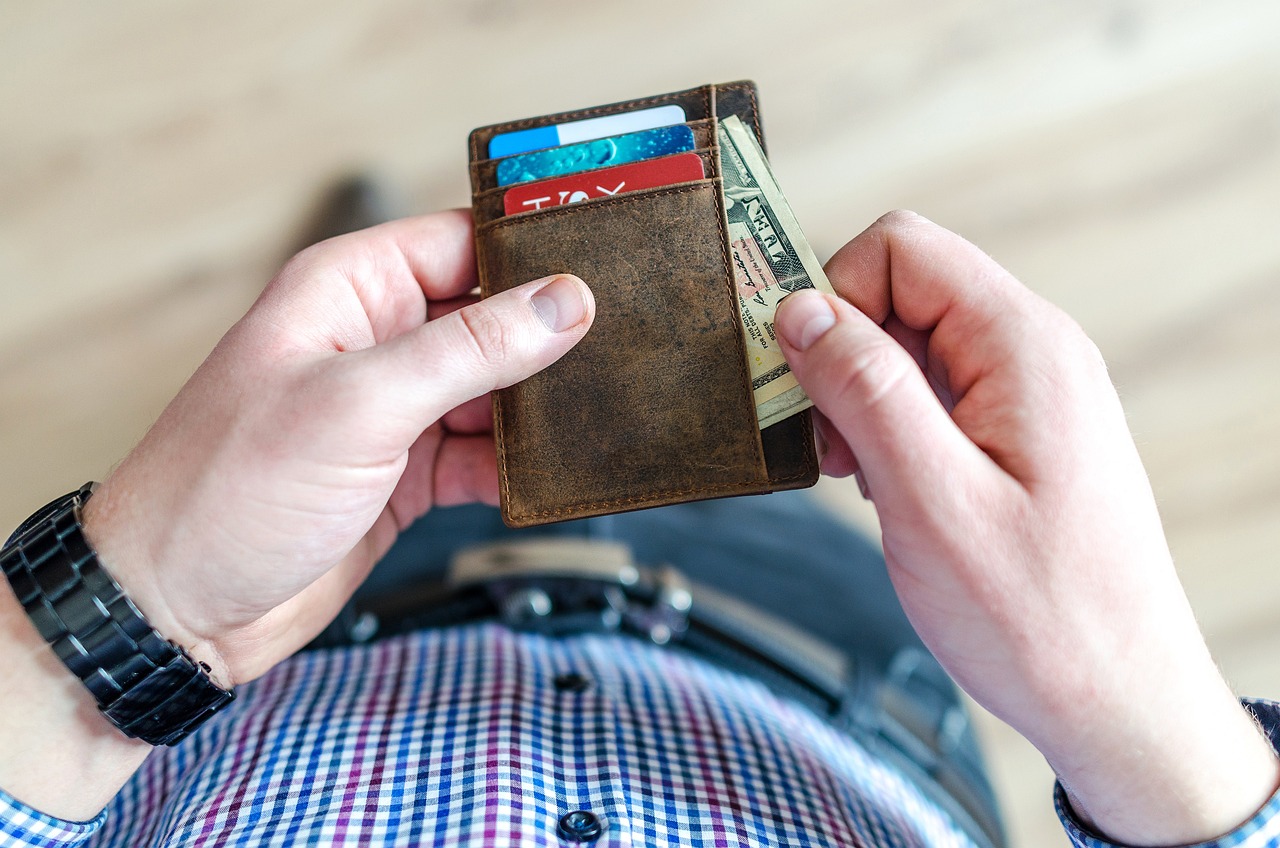
Customer Support Options
When it comes to digital wallets, customer support can make or break the user experience. Imagine having a wallet filled with digital assets, and suddenly you encounter an issue. Wouldn't you want prompt assistance? The reality is that effective customer support is crucial in building trust and ensuring users feel secure while using their wallets. Different wallet providers offer a variety of support options, and understanding these can help users choose the right wallet for their needs.
Many wallet providers offer multiple channels for customer support, including:
- Email Support: This is often the most common method. Users can send their queries and typically receive a response within a few hours to a couple of days.
- Live Chat: For those who prefer instant responses, live chat options are a lifesaver. This feature allows users to connect with support representatives in real-time, making it easier to resolve issues on the spot.
- Phone Support: Some wallet providers offer direct phone support, which can be particularly useful for complex issues that require detailed explanations.
- Help Centers: Many wallets maintain comprehensive help centers or FAQs on their websites. These resources can answer common questions and provide troubleshooting tips.
It's important to consider the response times and the quality of the support received. A wallet that offers 24/7 support with quick response times can significantly enhance user satisfaction. On the other hand, slow or unhelpful support can lead to frustration and loss of trust. Additionally, the availability of support in different languages can also be a vital factor for users in non-English speaking regions.
Moreover, customer support isn't just about resolving issues; it’s also about educating users on how to use the wallet effectively. Many providers offer tutorials, webinars, and community forums where users can learn from one another. This not only empowers users but also fosters a sense of community around the wallet, making it more appealing to new adopters.
In summary, when choosing a digital wallet, it's essential to evaluate the customer support options available. A wallet that prioritizes user assistance can lead to a more satisfying experience, encouraging users to engage more deeply with their digital assets. After all, a well-supported wallet is like a reliable friend—always there when you need it!
To help you navigate the world of digital wallets, we've compiled a list of frequently asked questions. This section aims to clarify common doubts and enhance your understanding of wallet functionalities.
- What types of wallets are available? There are digital wallets, hardware wallets, and paper wallets, each serving different needs and security levels.
- How secure are digital wallets? Security varies by provider, but many wallets offer features like encryption and two-factor authentication to protect user assets.
- Can I recover my wallet if I forget my password? Most wallets provide recovery options, often including recovery phrases or backup keys.
- Is customer support available 24/7? This depends on the wallet provider; some offer round-the-clock support while others may have limited hours.

Market Trends
The digital wallet landscape is evolving at a breakneck speed, driven by technological advancements and changing user preferences. One of the most significant trends shaping this market is the rise of Decentralized Finance (DeFi). DeFi platforms allow users to lend, borrow, and trade assets directly from their wallets, eliminating the need for traditional financial intermediaries. This shift not only empowers users with more control over their finances but also introduces a new level of complexity that wallets must accommodate. With DeFi, users are looking for wallets that offer seamless integration with various protocols, enabling them to perform complex transactions effortlessly.
Another noteworthy trend is the growing popularity of Non-Fungible Tokens (NFTs). As digital art and collectibles gain traction, wallets are adapting to support these unique assets. Users are now seeking wallets that not only store cryptocurrencies but also manage their NFT collections effectively. This trend has led to the development of specialized wallets designed to cater to NFT enthusiasts, providing features like easy browsing, trading capabilities, and secure storage solutions.
Moreover, the demand for enhanced security measures continues to rise. As more users engage with digital wallets for significant transactions, they are increasingly concerned about the safety of their assets. Wallet providers are responding by implementing advanced security features, such as multi-signature capabilities and sophisticated encryption methods. These features not only protect user assets but also build trust, which is crucial in attracting new users to the wallet ecosystem.
To illustrate these trends further, consider the following table that summarizes the key features users are looking for in modern wallets:
| Feature | Description | Importance |
|---|---|---|
| DeFi Integration | Ability to interact with decentralized finance platforms directly from the wallet. | High |
| NFT Support | Tools for managing, buying, and selling non-fungible tokens. | Medium |
| Enhanced Security | Features like multi-signature and advanced encryption for asset protection. | Critical |
| User-Friendly Interface | Intuitive design that simplifies navigation and transaction processes. | High |
| Customer Support | Accessible support for resolving user issues promptly. | High |
As we look towards the future, it's clear that these trends will continue to shape wallet functionalities. Users will increasingly demand wallets that are not only secure but also versatile enough to adapt to the rapidly changing digital landscape. The integration of DeFi and NFTs into wallet functionalities is just the tip of the iceberg. As technology advances and user needs evolve, we can expect to see even more innovative features emerge, further blurring the lines between traditional finance and the digital economy.
- What is a digital wallet?
A digital wallet is a software application that allows users to store and manage their cryptocurrencies and digital assets securely. It can be accessed via mobile devices or computers.
- How do I secure my digital wallet?
To secure your digital wallet, use strong passwords, enable two-factor authentication, and consider using hardware wallets for added security.
- Can I store NFTs in my wallet?
Yes, many modern wallets now support NFTs, allowing users to manage their digital collectibles alongside cryptocurrencies.
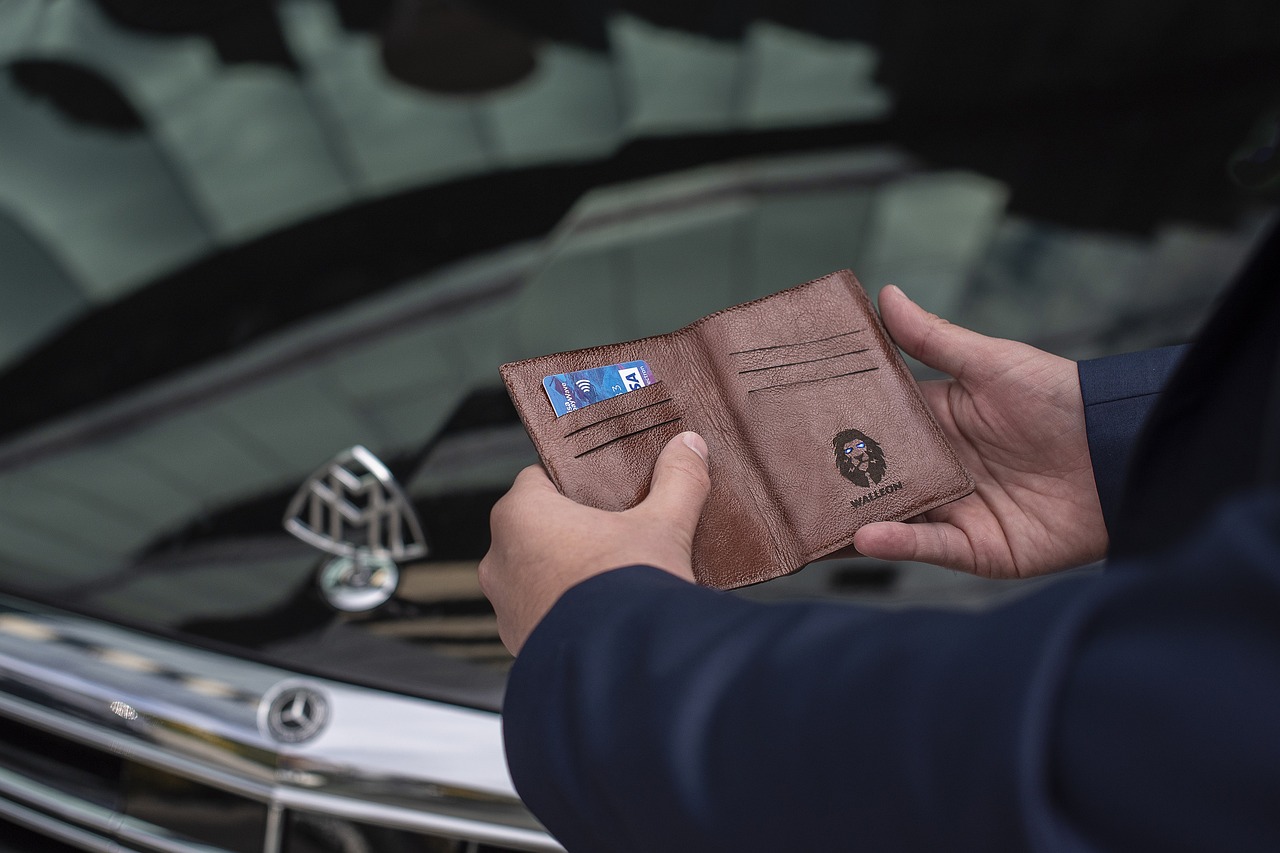
Decentralized Finance (DeFi) Integration
Decentralized Finance, or DeFi, is revolutionizing the way we think about financial transactions. Imagine a world where you can lend, borrow, and trade assets without relying on traditional banks or financial institutions. That's the power of DeFi, and it's being integrated into wallets at a rapid pace. This integration allows users to engage in complex financial activities directly from their wallets, transforming them into powerful tools for financial empowerment.
One of the most exciting aspects of DeFi integration is the ability to earn interest on your cryptocurrency holdings. Instead of letting your assets sit idle, many wallets now offer features that allow you to lend your crypto to others in exchange for interest. This process is often automated through smart contracts, which execute transactions based on predetermined conditions without the need for intermediaries. As a result, users can enjoy higher returns compared to traditional savings accounts.
Moreover, DeFi platforms often provide users with the ability to participate in liquidity pools. By contributing their assets to these pools, users can earn rewards and fees generated from transactions occurring within the pool. This not only enhances the wallet's functionality but also encourages a sense of community among users who are actively participating in the decentralized ecosystem. The rise of liquidity mining has made this feature particularly appealing, as it allows users to earn tokens for providing liquidity.
However, while the opportunities presented by DeFi are enticing, they also come with their own set of risks. Users must be aware of the potential for smart contract vulnerabilities, which can lead to loss of funds if not properly audited. Additionally, the volatile nature of cryptocurrencies can result in significant fluctuations in asset value, making it crucial for users to do their research and understand the risks involved.
As the DeFi landscape continues to evolve, wallet providers are adapting to meet the demands of users. Many now offer integrated services that allow for seamless interaction with DeFi protocols. This means that users can connect their wallets to various DeFi platforms with just a few clicks, streamlining the process of engaging with decentralized applications (dApps). As a result, the barriers to entry for participating in DeFi are lower than ever, making it accessible to a broader audience.
In summary, the integration of DeFi into wallets is reshaping the financial landscape, offering users unprecedented control over their assets and financial activities. As we move forward, it's essential for users to stay informed and vigilant, ensuring they make the most of the opportunities presented by this dynamic and rapidly evolving sector.
- What is DeFi? DeFi, or Decentralized Finance, refers to financial services that operate on blockchain technology, allowing users to conduct transactions without intermediaries.
- How does DeFi integration benefit wallet users? It allows users to lend, borrow, trade, and earn interest on their assets directly from their wallets, enhancing functionality and user experience.
- Are there risks associated with DeFi? Yes, risks include smart contract vulnerabilities and the volatility of cryptocurrencies, which can lead to potential losses.
- Can I earn interest on my cryptocurrency through my wallet? Yes, many wallets now offer features that allow users to lend their crypto and earn interest, often through automated smart contracts.
- How do I connect my wallet to DeFi platforms? Most modern wallets provide easy integration options, allowing users to connect to various DeFi protocols with just a few clicks.

Non-Fungible Tokens (NFTs)
Non-Fungible Tokens, or NFTs, have taken the digital world by storm, revolutionizing how we perceive ownership and value in the digital space. Unlike cryptocurrencies such as Bitcoin or Ethereum, which are fungible and can be exchanged on a one-to-one basis, NFTs are unique digital assets that represent ownership of a specific item or piece of content. This uniqueness is what makes them so appealing to artists, collectors, and investors alike. Imagine owning a one-of-a-kind piece of art that exists only in the digital realm—this is exactly what NFTs offer.
Wallets have had to evolve rapidly to accommodate this new class of digital assets. Users now seek wallets that can securely store their NFTs while providing a seamless experience for buying, selling, or trading these tokens. The integration of NFTs into wallets has introduced a host of new functionalities, allowing users to view their collections, track value fluctuations, and even engage in NFT marketplaces directly from their wallets. This has made the user experience not only more engaging but also more rewarding.
For those new to NFTs, it’s essential to understand how they work. Each NFT is built on blockchain technology, which ensures that ownership can be verified and tracked. This decentralization eliminates the need for intermediaries, giving users more control over their digital assets. Furthermore, many wallets now offer features that allow users to showcase their NFTs, turning their digital collections into a form of social currency. Imagine scrolling through your digital wallet and seeing your unique art pieces displayed—it's like having a virtual gallery at your fingertips!
As the NFT market continues to grow, so too does the demand for wallets that can handle these assets. Here are some key features that users should look for in a wallet that supports NFTs:
- Compatibility: Ensure the wallet supports the specific blockchain where your NFTs are minted, such as Ethereum or Binance Smart Chain.
- Security: Look for wallets that offer robust security measures, including private key management and multi-signature options.
- User Interface: A user-friendly interface can greatly enhance your experience, making it easy to navigate through your NFT collection.
In conclusion, NFTs represent a significant shift in how we view digital ownership, and wallets are at the forefront of this evolution. As more users enter the space, the demand for intuitive and secure wallet solutions will only increase. The future of wallets is not just about storing cryptocurrencies anymore; it’s about enabling a vibrant marketplace for unique digital assets.
To help you navigate the world of NFTs and wallets, we’ve compiled some frequently asked questions:
- What are NFTs? NFTs are unique digital tokens that represent ownership of a specific item or piece of content on the blockchain.
- How do I store NFTs? You can store NFTs in digital wallets that support them, ensuring the wallet is compatible with the blockchain where the NFT is created.
- Can I sell my NFTs? Yes, NFTs can be sold on various marketplaces, and many wallets now integrate features that allow for easy trading.
- Are NFTs secure? The security of NFTs depends on the wallet used. Look for wallets with strong security features to protect your assets.

Future of Wallets
The future of digital wallets is not just bright; it’s practically glowing with possibilities! As technology advances at breakneck speed, wallets are evolving to meet the needs of a more dynamic and interconnected world. Imagine a wallet that not only holds your money but also manages your identity, tracks your spending habits, and even interacts with smart contracts on the blockchain. It's like having a personal assistant right in your pocket, ready to help you navigate the complexities of modern finance.
One of the most exciting trends shaping the future of wallets is the integration of artificial intelligence (AI). AI can analyze user behavior, predict spending patterns, and offer personalized financial advice. This means that your wallet could eventually become a financial advisor, helping you make informed decisions about your money. For instance, if you frequently overspend on dining out, your wallet might suggest budget-friendly alternatives or remind you of your spending limits. It’s as if your wallet is gently nudging you toward better financial health!
Moreover, the rise of biometric authentication is set to revolutionize wallet security. Forget about remembering complex passwords; with biometric features like facial recognition or fingerprint scanning, accessing your funds will be as easy as a smile or a touch. This not only enhances security but also streamlines the user experience, making transactions quicker and more convenient. Think of it as a high-tech vault that only you can open, ensuring your assets are always safe and sound.
Additionally, the growing trend of decentralized finance (DeFi) is transforming how wallets function. Users can lend, borrow, and trade directly from their wallets without the need for intermediaries. This shift is not just about convenience; it’s about empowerment. Users gain more control over their financial transactions, and the wallet becomes a powerful tool for managing assets in a decentralized ecosystem. It’s akin to moving from a traditional bank to a digital marketplace where you are the master of your financial destiny.
Another fascinating development is the support for non-fungible tokens (NFTs). As digital art and collectibles gain popularity, wallets are adapting to manage these unique assets. Users will soon be able to showcase their NFT collections right within their wallets, making it easier to trade or display them. Imagine a wallet that not only holds your currency but also curates your digital art gallery! This integration will not only enhance user experience but also open up new avenues for creativity and investment.
As we look to the future, it’s clear that wallets will continue to evolve, driven by technological advancements and changing user needs. The next generation of digital wallets will likely incorporate features that enhance security, streamline transactions, and offer personalized financial insights. It’s an exciting time to be a part of this digital revolution, where your wallet is not just a place to store money but a comprehensive financial tool that adapts to your lifestyle.
- What will wallets look like in the future? Future wallets may incorporate AI, biometric authentication, and support for NFTs, transforming them into multifunctional financial tools.
- How will AI improve wallet functionality? AI can analyze spending habits and provide personalized financial advice, making wallet usage more intuitive and beneficial.
- What role will DeFi play in future wallets? DeFi will allow users to conduct financial transactions directly from their wallets, enhancing control and convenience.
- Will my wallet be secure with biometric features? Yes, biometric authentication offers a higher level of security, making unauthorized access significantly more difficult.
Frequently Asked Questions
- What are the different types of wallets available?
There are several types of wallets you can choose from, including digital wallets, hardware wallets, and paper wallets. Digital wallets are often used for online transactions, while hardware wallets provide enhanced security by storing your assets offline. Paper wallets, on the other hand, are a physical representation of your keys and are great for long-term storage.
- How do wallets ensure security for my assets?
Wallets use various security features to protect your assets, such as encryption methods, two-factor authentication (2FA), and cold storage. Encryption helps safeguard your sensitive data, while 2FA adds an extra layer of protection by requiring two forms of verification before allowing access. Cold storage keeps your assets offline, making them less vulnerable to online attacks.
- What is the difference between symmetric and asymmetric encryption?
Symmetric encryption uses the same key for both encryption and decryption, making it faster but potentially less secure if the key is compromised. Asymmetric encryption, however, utilizes a pair of keys – a public key for encryption and a private key for decryption – which enhances security, especially for transactions involving sensitive data.
- What are multi-signature wallets and why are they useful?
Multi-signature wallets require multiple private keys to authorize a transaction, providing an added layer of security. This is particularly useful in collaborative environments or for businesses where multiple approvals are necessary before any funds can be moved, reducing the risk of unauthorized access.
- How important is customer support for wallet users?
Reliable customer support is crucial for wallet users, as it helps resolve issues quickly and builds trust in the wallet provider. Effective support options, such as live chat, email, and phone assistance, can significantly enhance user satisfaction and encourage broader adoption of the wallet.
- What trends are currently shaping wallet functionality?
Current trends include the rise of decentralized finance (DeFi) and the integration of non-fungible tokens (NFTs). DeFi allows users to lend, borrow, and trade directly from their wallets, transforming traditional financial interactions. Meanwhile, the popularity of NFTs has led wallets to adapt, providing users with new ways to manage and trade their unique digital assets.
- What does the future hold for digital wallets?
The future of digital wallets looks promising, with advancements in technology and evolving user needs likely to shape new functionalities. Expect to see enhanced security features, more user-friendly interfaces, and greater integration with emerging technologies, making wallets even more essential in our digital lives.

